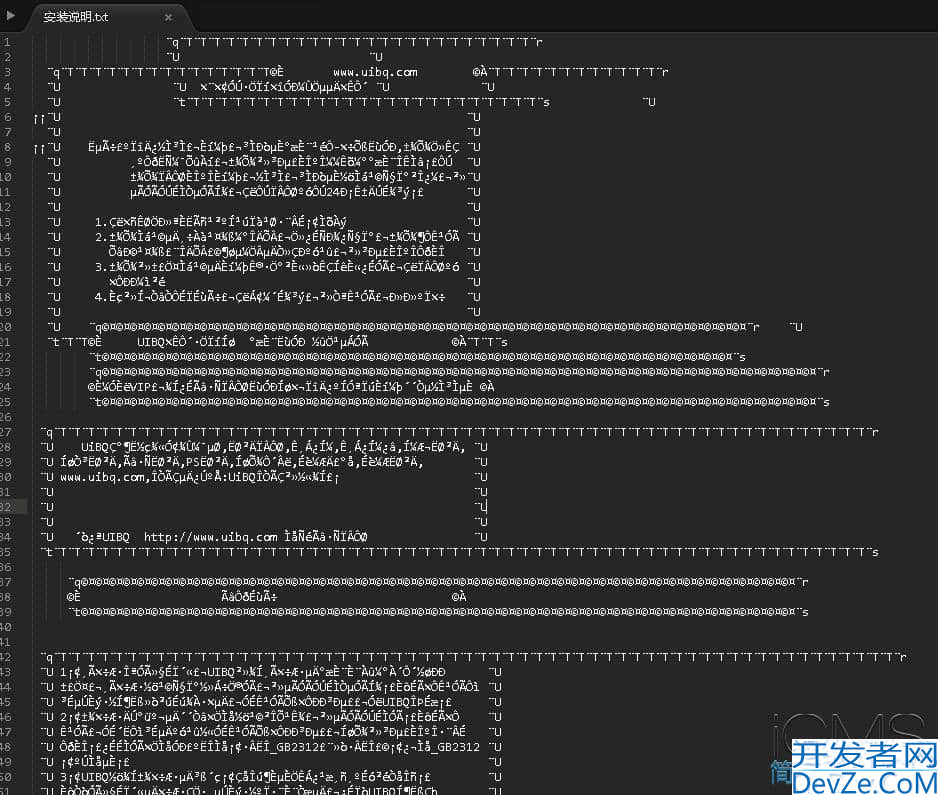tensorflow2.10使用BERT实现Semantic Similarity过程解析
目录
- 前言
- 数据处理
- 模型搭建
- 模型训练
- 微调模型
- 模型评估
- 推理测试
前言
本文详细解释了在 tensorflow-gpu 基础上,实现用 BERT + BILSTM 计算文本相似度的过程,主要的配置如下:
tensorflow-gpu == 2.10.0 python == 3.10 transformers == 4.26.1
数据处理
这里导入了后续步骤需要用到的库,包括 NumPy、Pandas、TensorFlow 和 Transformers。同时设置了几个重要的参数。其中,max_length 表示输入文本的最大长度,BATch_size 表示每个批次训练的样本数量,epochs 表示训练集训练次数,labels 列表包含了三个分类标签,分别为“矛盾”python、“蕴含” 和 “中性”。
import numpy as np import pandas as pd import tensorflow as tf import transformers max_length = 128 batch_size = 32 epochs = 2 labels = ["contradiction", "entailment", "neutral"]
这里使用 Pandas 库读取了 SNLI 数据集中的训练集、验证集和测试集。其中,训练集php只读取了前 30 万条数据。接着打印了各数据集的样本数。然后,打印了训练集中的三组样本,每组样本包括两个句子和分类标签。
train_df = pd.read_csv("SNLI_Corpus/snli_1.0_train.csv", nrows=300000)
valid_df = pd.read_csv("SNLI_Corpus/snli_1.0_dev.csv")
test_df = pd.read_csv("SNLI_Corpus/snli_1.0_test.csv")
print(f"训练集样本数 : {train_df.shape[0]}")
print(f"验证集样本数: {valid_df.shape[0]}")
print(f"测试集样本数: {test_df.shape[0]}")
print()
print(f"句子一: {train_df.loc[5, 'sentence1']}")
print(f"句子二: {train_df.loc[5, 'sentence2']}")
print(f"相似度: {train_df.loc[5, 'similarity']}")
print()
print(f"句子一: {train_df.loc[3, 'sentence1']}")
print(f"句子二: {train_df.loc[3, 'sentence2']}")
print(f"相似度: {train_df.loc[3, 'similarity']}")
print()
print(f"句子一: {train_df.loc[4, 'sentence1']}")
print(f"句子二: {train_df.loc[4, 'sentence2']}")
print(f"相似度: {train_df.loc[4, 'similarity']}")
打印:
训练集样本数 : 300000
验证集样本数: 10000测试集样本数: 10000句子一: Children smiling and waving at camera句子二: The kids are frowning相似度: contradiction句子一: Children smiling and waving at camera句子二: They are smiling at their parents相似度: neutral句子一: Children smiling and waving at camera句子二: There are children present相似度: entailment
首先使用 dropna 函数删除训练集中的缺失数据。然后对训练集、验证集
测试集中的分类标签为“-”的数据进行了删除操作。接着使用 sample 函数进行了打乱处理,并使用 reset_index 函数重置了索引。最后,打印了处理后的各个数据集样本数。
train_df.dropna(axis=0, inplace=True)
train_df = ( train_df[train_df.similarity != "-"].sample(frac=1.0, random_state=30).reset_index(drop=True) )
valid_df = ( valid_df[valid_df.similarity != "-"].sample(frac=1.0, random_stjsate=30).reset_index(drop=True) )
test_df = ( test_df[test_df.similarity != "-"].sample(frac=1.0, random_state=30).reset_index(drop=True) )
print(f"处理后训练集样本数 : {train_df.shape[0]}")
print(f"处理后验证集样本数: {valid_df.shape[0]}")
print(f"处理后测试集样本数: {test_df.shape[0]}")
打印:
处理后训练集样本数 : 299616
处理后验证集样本数: 9842处理后测试集样本数: 9824
这里将训练集、验证集和测试集中的分类标签转换为数字,并将标签转换为 one-hot 编码格式。具体来说就是使用 apply 函数将 "contradiction" 标签转换为数字 0,将 "entailment" 标签转换为数字 1,将 "neutral" 标签转换为数字 2。然后,使用 to_categorical 函数将数字标签转换为 one-hot 编码格式。最终使用 y_train、y_val 和 y_test 存储了训练集、验证集和测试集的 one-hot 编码标签结果。
train_df["label"] = train_df["similarity"].apply(lambda x: 0 if x == "contradiction" else 1 if x == "entailment" else 2) y_train = tf.keras.utils.to_categorical(train_df.label, num_classes=3) valid_df["label"] = valid_df["similarity"].apply(lambda x: 0 if x == "contradiction" else 1 if x == "entailment" else 2) y_val = tf.keras.utils.to_categorical(valid_df.label, num_classes=3) test_df["label"] = test_df["similarity"].apply(lambda x: 0 if x == "contradiction" else 1 if x == "entailment" else 2) y_test = tf.keras.utils.to_categorical(test_df.label, num_classes=3)
模型搭建
这里定义了一个继承自 tf.keras.utils.Sequence 的类 BertSemanticDataGenerator ,用于生成 BERT 模型训练所需的数据。
在初始化时,需要传入句子对的数组 sentence_pairs 和对应的标签 labels,同时可以指定批次大小 bajstch_size ,shuffle 表示是否要打乱数据, include_targets 表示是否包含标签信息。类中还定义了一个 BERT 分词器 tokenizer,使用了 bert-base-uncased 预训练模型。
同时实现了 __len__ 、 __getitem__ 、on_epoch_end 三个方法, __len__ 用于获取数据集可以按照 batch_size 均分的批次数量 ,__getitem__ 首先使用索引从 self.sentence_pairs 中获取批数据,然后使用指定的编码器对这些句子对进行编码,使其适用于 BERT 模型的输入,最后返回输入和标签。on_epoch_end 方法在每轮训练之后判断是否需要打乱数据集。
class BertSemanticDataGenerator(tf.keras.utils.Sequence):
def __init__( self, sentence_pairs, labels, batch_size=batch_size, shuffle=True, include_targets=True ):
self.sentence_pairs = sentence_pairs
self.labels = labels
self.shuffle = shuffhttp://www.devze.comle
self.batch_size = batch_size
self.include_targets = include_targets
self.tokenizer = transformers.BertTokenizer.from_pretrained("bert-base-uncased", do_lower_case=True )
self.indexes = np.arange(len(self.sentence_pairs))
self.on_epoch_end()
def __len__(self):
return len(self.sentence_pairs) // self.batch_size
def __getitem__(self, idx):
indexes = self.indexes[idx * self.batch_size : (idx + 1) * self.batch_size]
sentence_pairs = self.sentence_pairs[indexes]
encoded = self.tokenizer.batch_encode_plus( sentence_pairs.tolist(), add_special_tokens=True,
max_length=max_length, return_attention_mask=True, return_token_type_ids=True,
pad_to_max_length=True, return_tensors="tf")
input_ids = np.array(encoded["input_ids"], dtype="int32")
attention_masks = np.array(encoded["attention_mask"], dtype="int32")
token_type_ids = np.array(encoded["token_type_ids"], dtype="int32")
if self.include_targets:
labels = np.array(self.labels[indexes], dtype="int32")
return [input_ids, attention_masks, token_type_ids], labels
else:
return [input_ids, attention_masks, token_type_ids]
def on_epoch_end(self):
if self.shuffle:
np.random.RandomState(30).shuffle(self.indexes)
这里使用 TensorFlow2 和 Transformers 库实现了一个基于 BERT 的文本分类模型。以下是代码的主要步骤。
首先,定义了三个输入张量:input_ids、attention_masks 和 token_type_ids ,这些张量的形状都是 (max_length,) ,其中 max_length 是预处理后的文本序列的最大长度。
接下来,定义了一个 BERT 模型 bert_model 。通过调用 TFBertModel.from_pretrained 方法,该模型从预先训练好的 BERT 模型中加载参数。同时,将 bert_model.trainable 设置为 False ,以避免在训练过程中更新 BERT 模型的参数。
然后,将 input_ids、attention_masks 和 token_type_ids 作为输入传入 bert_model ,得到 bert_output 。获取 BERT 模型的最后一个隐藏状态(last_hidden_state),作为 LSTM 层的输入。
接着,使用 Bi-LSTM 层对 sequence_output 进行处理,生成一个具有 64 个输出单元的 LSTM 层,返回整个序列。然后,将 Bi-LSTM 层的输出分别进行全局平均池化和全局最大池化,得到 avg_pool 和 max_pool 。将这两个输出连接起来,形成一个维度为 128 的向量,通过 Dropout 层后,经过一个 Dense 层输出最终的分类结果。
最后,使用 tf.keras.models.Model 方法,将 input_ids、attention_masks 和 token_type_ids 作为输入,output 作为输出,定义一个完整的神经网络模型。并使用 model.compile 方法编译模型,指定了优化器 Adam 、损失函数为 categorical_crossentropy 、评估指标为 acc 。
input_ids = tf.keras.layers.Input(shape=(max_length,), dtype=tf.int32, name="input_ids")
attention_masks = tf.keras.layers.Input(shape=(max_length,), dtype=tf.int32, name="attention_masks")
token_type_ids = tf.keras.layers.Input(shape=(max_length,), dtype=tf.int32, name="token_type_ids")
bert_model = transformers.TFBertModel.from_pretrained("bert-base-uncased")
bert_model.trainable = False
bert_output = bert_model.bert(input_ids, attention_mask=attention_masks, token_type_ids=token_type_ids)
sequence_output = bert_output.last_hidden_state
bi_lstm = tf.keras.layers.Bidirectional(tf.keras.layers.LSTM(64, return_sequences=True))(sequence_output)
avg_pool = tf.keras.layers.GlobalAveragePooling1D()(bi_lstm)
max_pool = tf.keras.layers.GlobalMaxPooling1D()(bi_lstm)
concat = tf.keras.layers.concatenate([avg_pool, max_pool])
dropout = tf.keras.layers.Dropout(0.5)(concat)
output = tf.keras.layers.Dense(3, activation="softmax")(dropout)
model = tf.keras.models.Model(inputs=[input_ids, attention_masks, token_type_ids], outputs=output)
model.compile( optimizer=tf.keras.optimizers.Adam(), loss="categorical_crossentropy", metrics=["acc"],)
model.summary()
打印模型结构可以看到, BERT 的参数都被冻结了:
Model: "model"
__________________________________________________________________________________________________
Layer (type) Output Shape Param # Connected to
==================================================================================================
input_ids (InputLayer) [(None, 128)] 0 []
attention_masks (InputLayer) [(None, 128)] 0 []
token_type_ids (InputLayer) [(None, 128)] 0 []
bert (TFBertMainLayer) TFBaseModelOutputWi 109482240 ['input_ids[0][0]',
thPoolingAndCrossAt 'attention_masks[0][0]',
tentions(last_hidde 'token_type_ids[0][0]']
n_state=(None, 128,
768),
pooler_output=(Non
e, 768), 开发者_开发教程
past_key_values=No
ne, hidden_states=N
one, attentions=Non
e, cross_attentions
=None)
bidirectional (Bidirectional) (None, 128, 128) 426496 ['bert[0][0]']
global_average_pooling1d (Glob (None, 128) 0 ['bidirectional[0][0]']
alAveragePooling1D)
global_max_pooling1d (GlobalMa (None, 128) 0 ['bidirectional[0][0]']
xPooling1D)
concatenate (Concatenate) (None, 256) 0 ['global_average_pooling1d[0][0]'
, 'global_max_pooling1d[0][0]']
dropout_37 (Dropout) (None, 256) 0 ['concatenate[0][0]']
dense (Dense) (None, 3) 771 ['dropout_37[0][0]']
==================================================================================================
Total params: 109,909,507
Trainable params: 427,267
Non-trainable params: 109,482,240
模型训练
首先,将训练集和验证集传入 BertSemanticDataGenerator 对象中,创建一个训练数据生成器 train_data 和一个验证数据生成器 valid_data。然后,通过调用 model.fit() 方法,对模型进行训练。其中,训练数据为 train_data,验证数据为 valid_data。 use_multiprocessing 和 workers 参数用于指定在训练期间使用的进程数,以加快训练速度。
最后,训练历史记录存储在 history 变量中,可以使用这些历史数据来分析模型的训练效果。
train_data = BertSemanticDataGenerator( train_df[["sentence1", "sentence2"]].values.astype("str"), y_train, batch_size=batch_size, shuffle=True)
valid_data = BertSemanticDataGenerator( valid_df[["sentence1", "sentence2"]].values.astype("str"), y_val, batch_size=batch_size, shuffle=False)
history = model.fit( train_data, validation_data=valid_data, epochs=epochs, use_multiprocessing=True, workers=-1 )
Epoch 1/2
11/9363 [..............................] - ETA: 16:31 - loss: 1.1949 - acc: 0.3580
31/9363 [..............................] - ETA: 13:51 - loss: 1.1223 - acc: 0.3831
...
Epoch 2/2
...
9363/9363 [==============================] - ETA: 0s - loss: 0.5691 - acc: 0.7724
9363/9363 [==============================] - 791s 84ms/step - loss: 0.5691 - acc: 0.7724 - val_loss: 0.4635 - val_acc: 0.8226
微调模型
这里是对训练好的 BERT 模型进行 fine-tuning,即对其进行微调以适应新任务。具体来说就是通过将 bert_model.trainable 设置为 True ,可以使得 BERT 模型中的参数可以在 fine-tuning 过程中进行更新。然后使用 tf.keras.optimizers.Adam(1e-5) 作为优化器,以较小的学习率进行微调。同时使用 categorical_crossentropy 作为损失函数,用来评估模型输出的预测分布与实际标签分布之间的差异。最后,通过 model.summary() 函数查看模型的结构和参数信息,可以发现所有的参数现在都可以训练了。
bert_model.trainable = True model.compile( optimizer=tf.keras.optimizers.Adam(1e-5), loss="categorical_crossentropy", metrics=["accuracy"] ) model.summary()
打印:
Model: "model"
__________________________________________________________________________________________________
Layer (type) Output Shape Param # Connected to
==================================================================================================
input_ids (InputLayer) [(None, 128)] 0 []
attention_masks (InputLayer) [(None, 128)] 0 []
token_type_ids (InputLayer) [(None, 128)] 0 []
bert (TFBertMainLayer) TFBaseModelOutputWi 109482240 ['input_ids[0][0]',
thPoolingAndCrossAt 'attention_masks[0][0]',
tentions(last_hidde 'token_type_ids[0][0]']
n_state=(None, 128,
768),
pooler_output=(Non
e, 768),
past_key_values=No
ne, hidden_states=N
one, attentions=Non
e, cross_attentions
=None)
bidirectional (Bidirectional) (None, 128, 128) 426496 ['bert[0][0]']
global_average_pooling1d (Glob (None, 128) 0 ['bidirectional[0][0]']
alAveragePooling1D)
global_max_pooling1d (GlobalMa (None, 128) 0 ['bidirectional[0][0]']
xPooling1D)
concatenate (Concatenate) (None, 256) 0 ['global_average_pooling1d[0][0]'
, 'global_max_pooling1d[0][0]']
dropout_37 (Dropout) (None, 256) 0 ['concatenate[0][0]']
dense (Dense) (None, 3) 771 ['dropout_37[0][0]']
==================================================================================================
Total params: 109,909,507
Trainable params: 109,909,507
Non-trainable params: 0
接着上面的模型,继续进行微调训练,我们可以看到这次的准确率比之前有所提升。
history = model.fit( train_data, validation_data=valid_data, epochs=epochs, use_multiprocessing=True, workers=-1,)
打印:
Epoch 1/2
7/9363 [..............................] - ETA: 24:41 - loss: 0.5716 - accuracy: 0.7946...Epoch 2/2... 9363/9363 [==============================] - 1500s 160ms/step - loss: 0.3201 - accuracy: 0.8845 - val_loss: 0.2933 - val_accuracy: 0.8974
模型评估
使用测试数据对模型的性能进行评估。
test_data = BertSemanticDataGenerator( test_df[["sentence1", "sentence2"]].values.astype("str"), y_test, batch_size=batch_size, shuffle=False)
model.evaLuate(test_data, verbose=1)
307/307 [==============================] - 18s 57ms/step - loss: 0.2916 - accuracy: 0.8951
推理测试
这里定义了一个名为 check_similarity 的函数,该函数可以用来检查两个句子的语义相似度。传入的参数是两个句子 sentence1 和 sentence2 。首先将这两个句子组成一个 np.array 格式方便处理,然后通过 BertSemanticDataGenerator 函数创建一个数据生成器生成模型需要的测试数据格式,使用训练好的函数返回句子对的预测概率,最后取预测概率最高的类别作为预测结果。
def check_similarity(sentence1, sentence2):
sentence_pairs = np.array([[str(sentence1), str(sentence2)]])
test_data = BertSemanticDataGenerator( sentence_pairs, labels=None, batch_size=1, shuffle=False, include_targets=False )
proba = model.predict(test_data[0])[0]
idx = np.argmax(proba)
proba = f"{proba[idx]: .2f}%"
pred = labels[idx]
return pred, proba
sentence1 = "Male in a blue jacket decides to lay in the grass"
sentence2 = "The guy wearing a blue jacket is laying on the green grass"
check_similarity(sentence1, sentence2)
打印:
('entailment', ' 0.51%')
以上就是tensorflow2.10使用BERT实现Semantic Similarity过程解析的详细内容,更多关于tensorflow Semantic Similarity的资料请关注我们其它相关文章!







 加载中,请稍侯......
加载中,请稍侯......
精彩评论